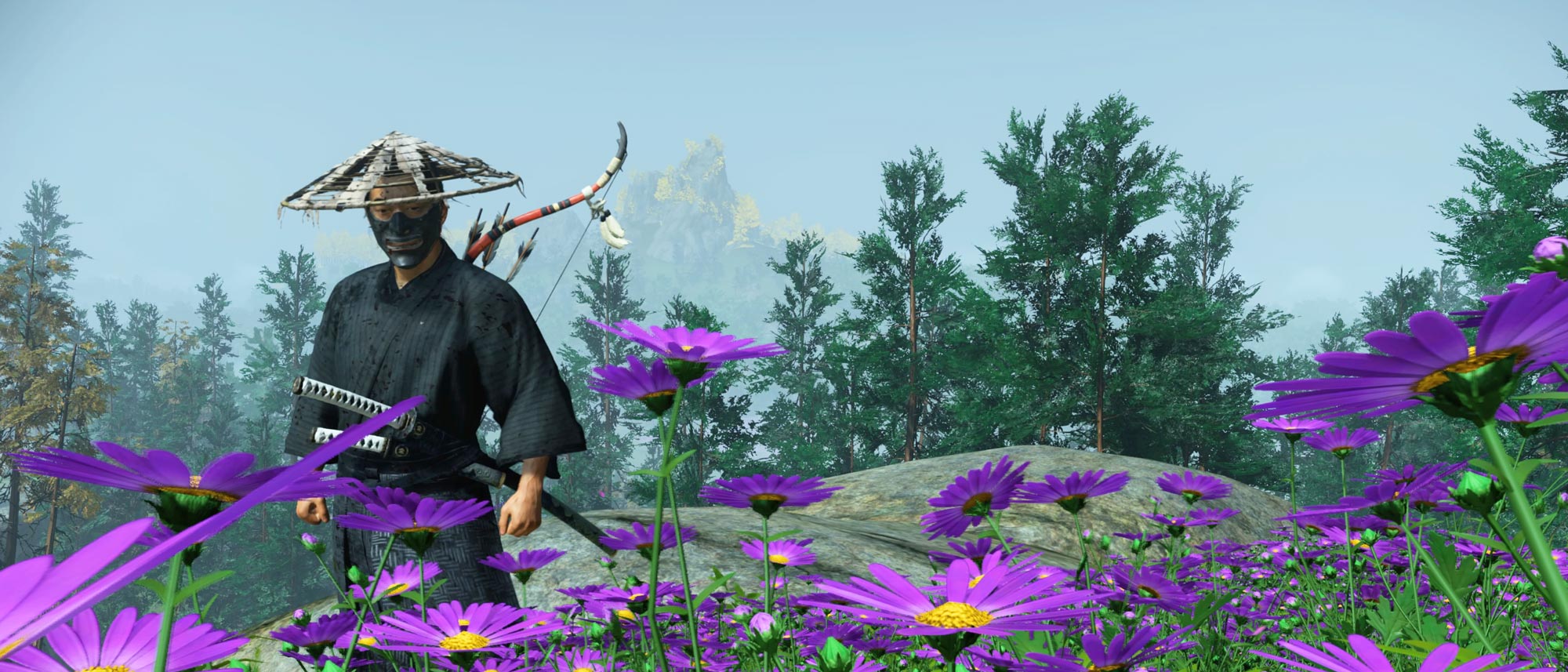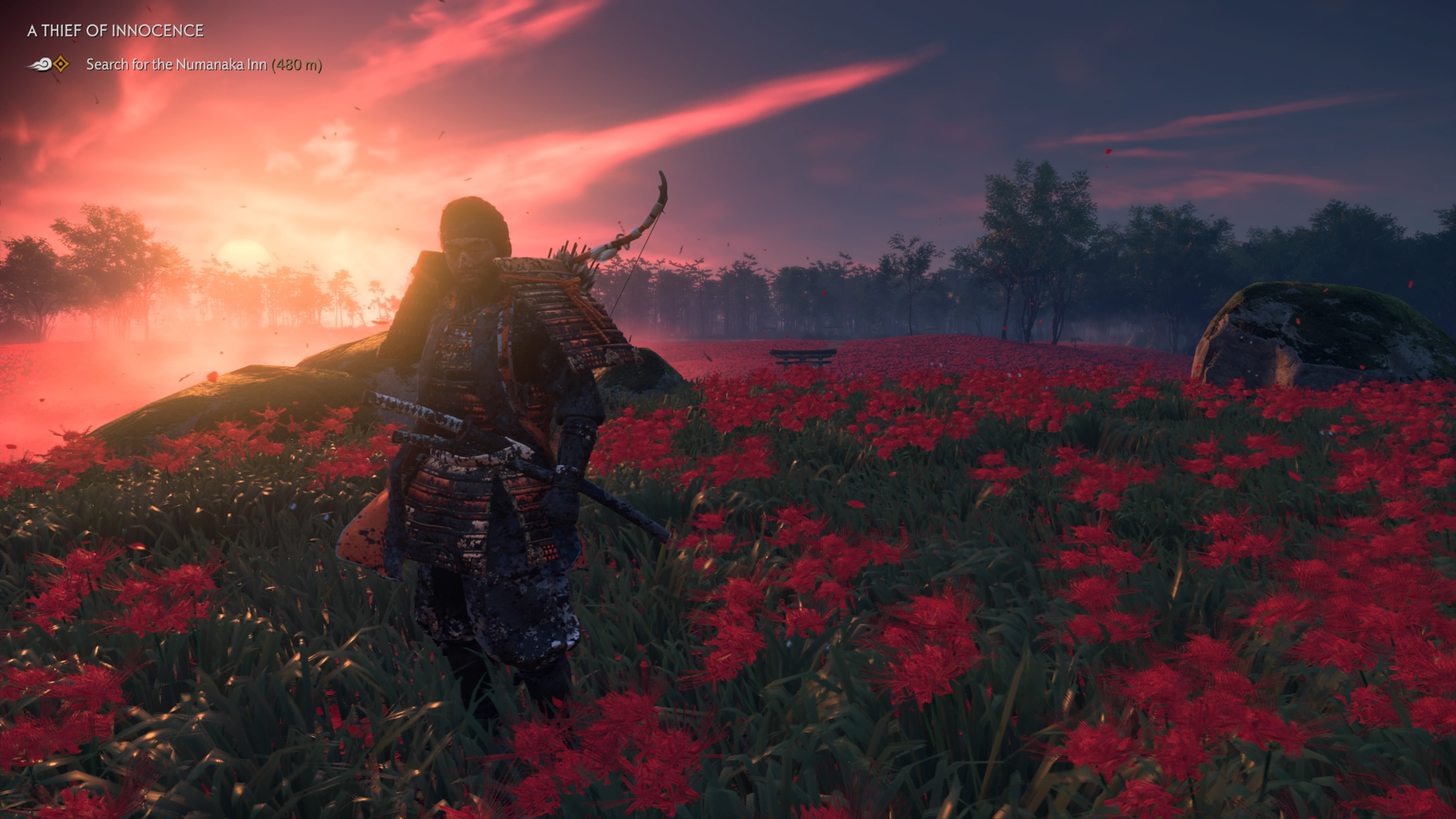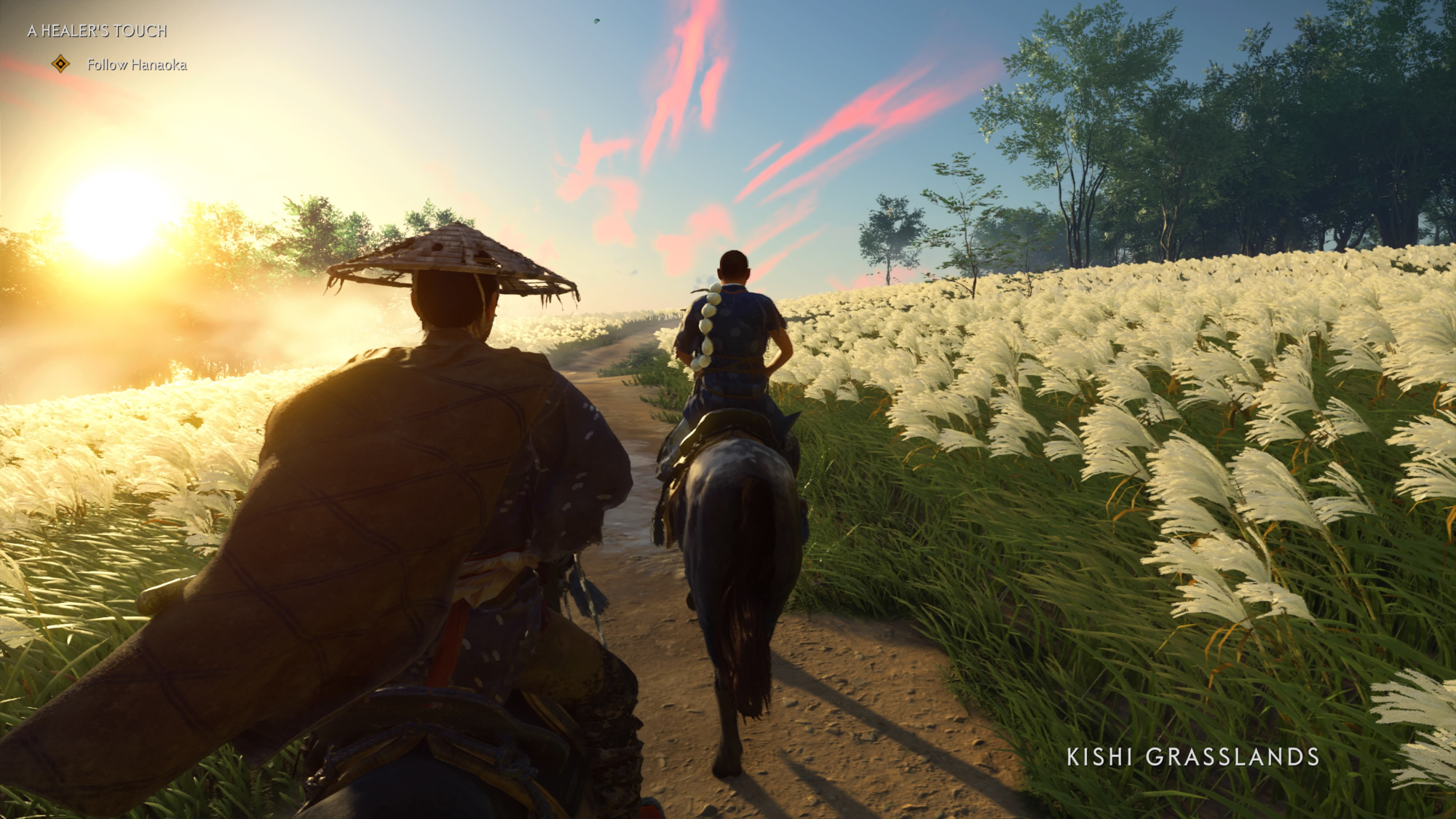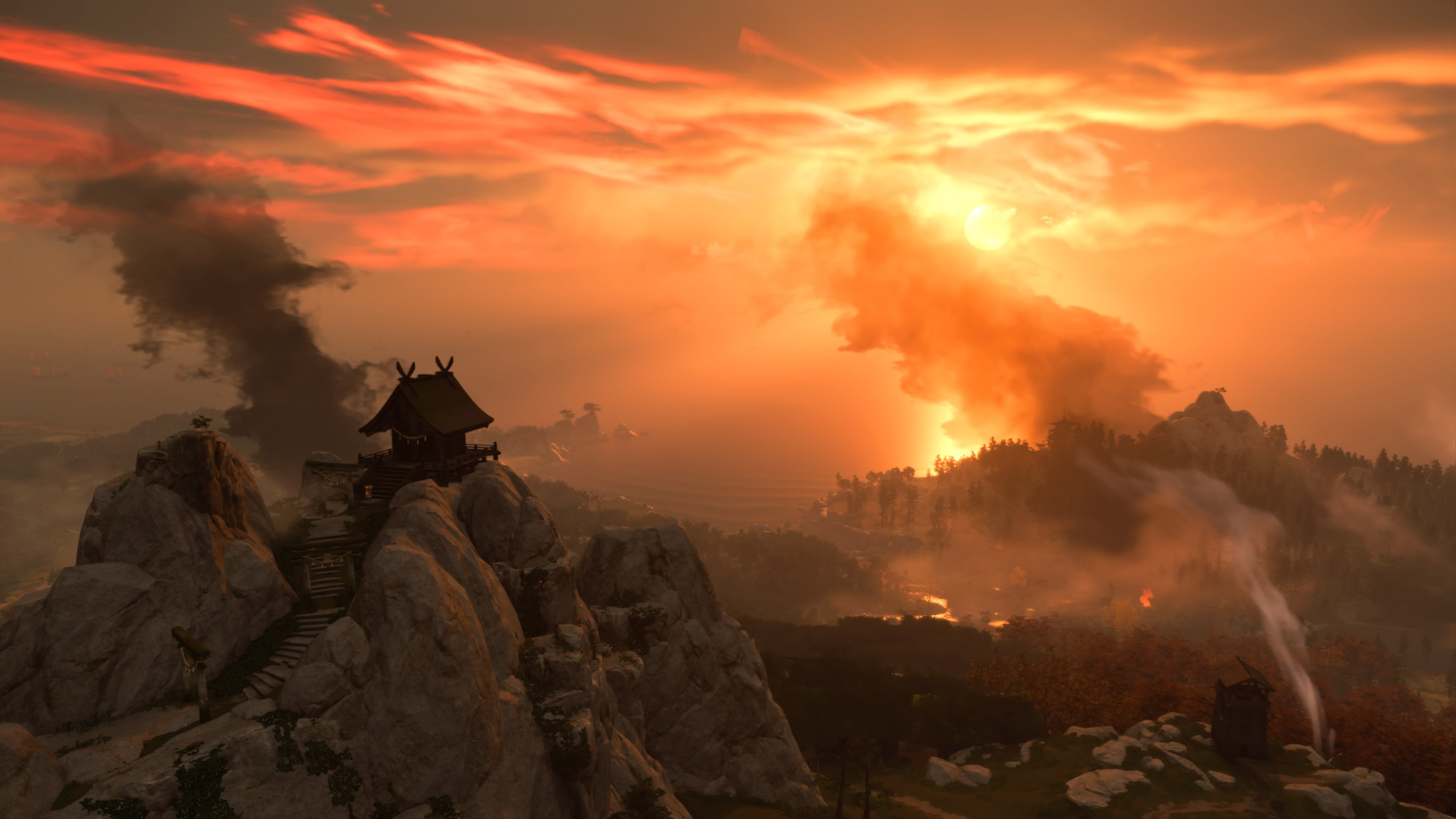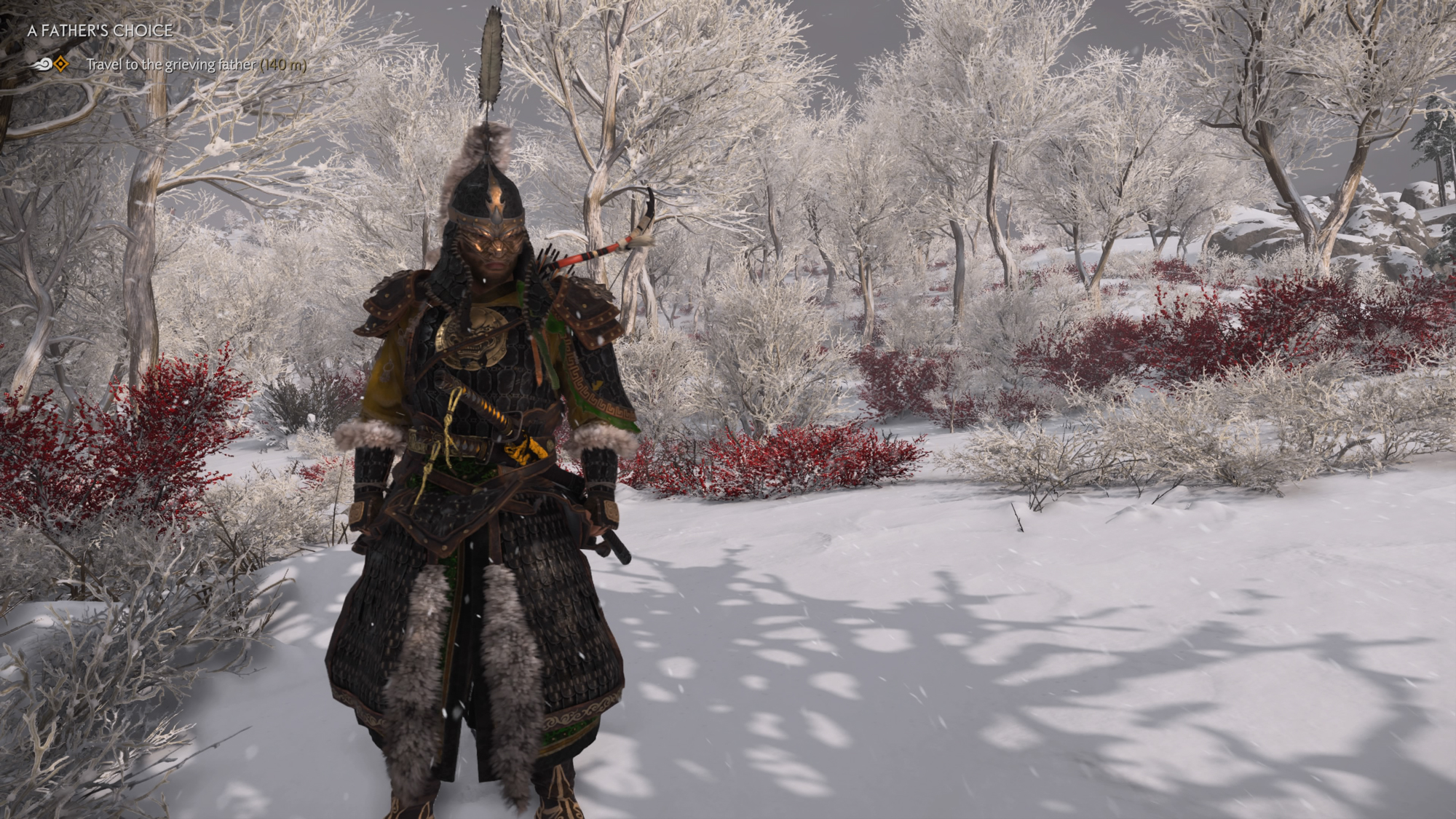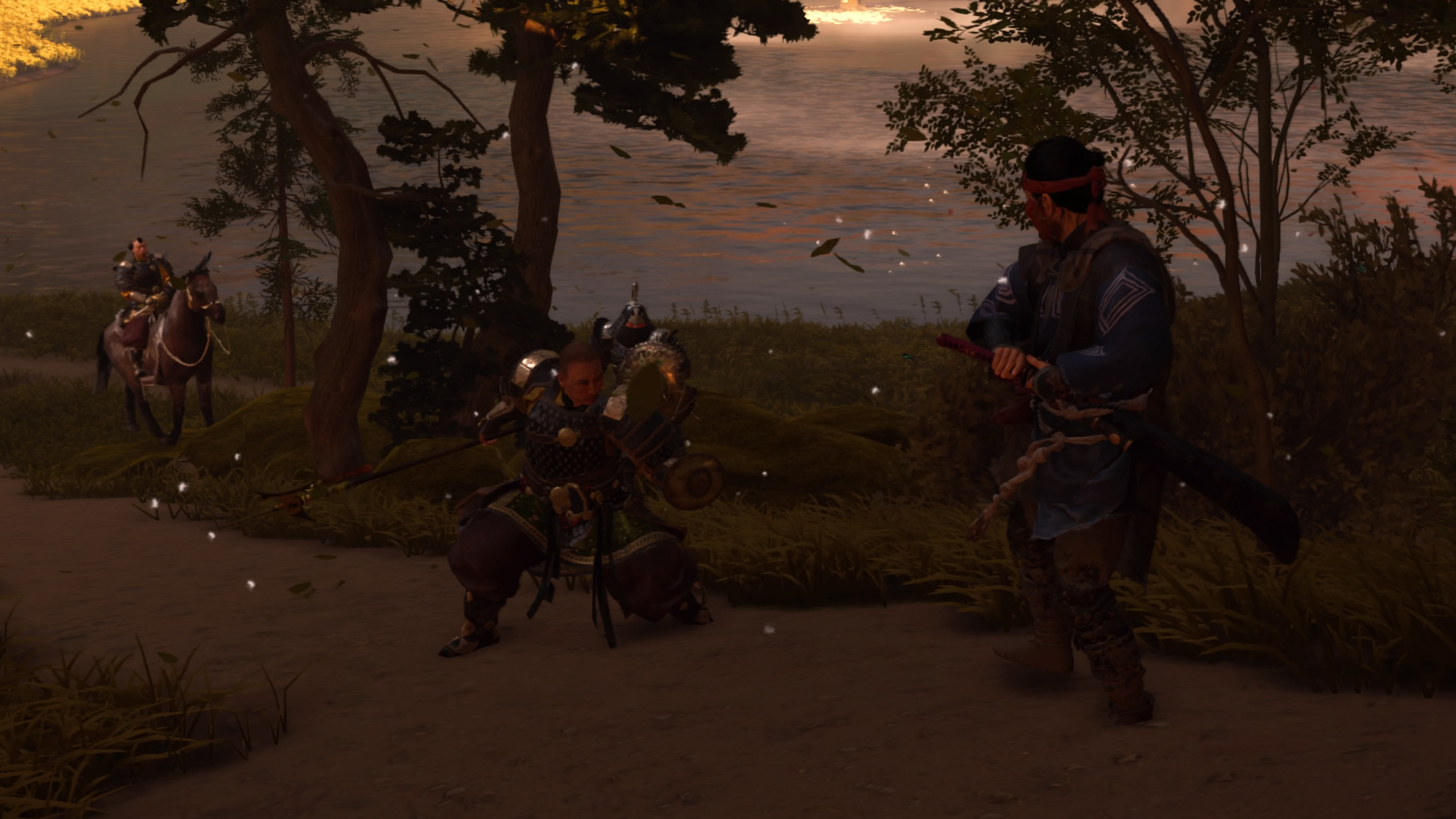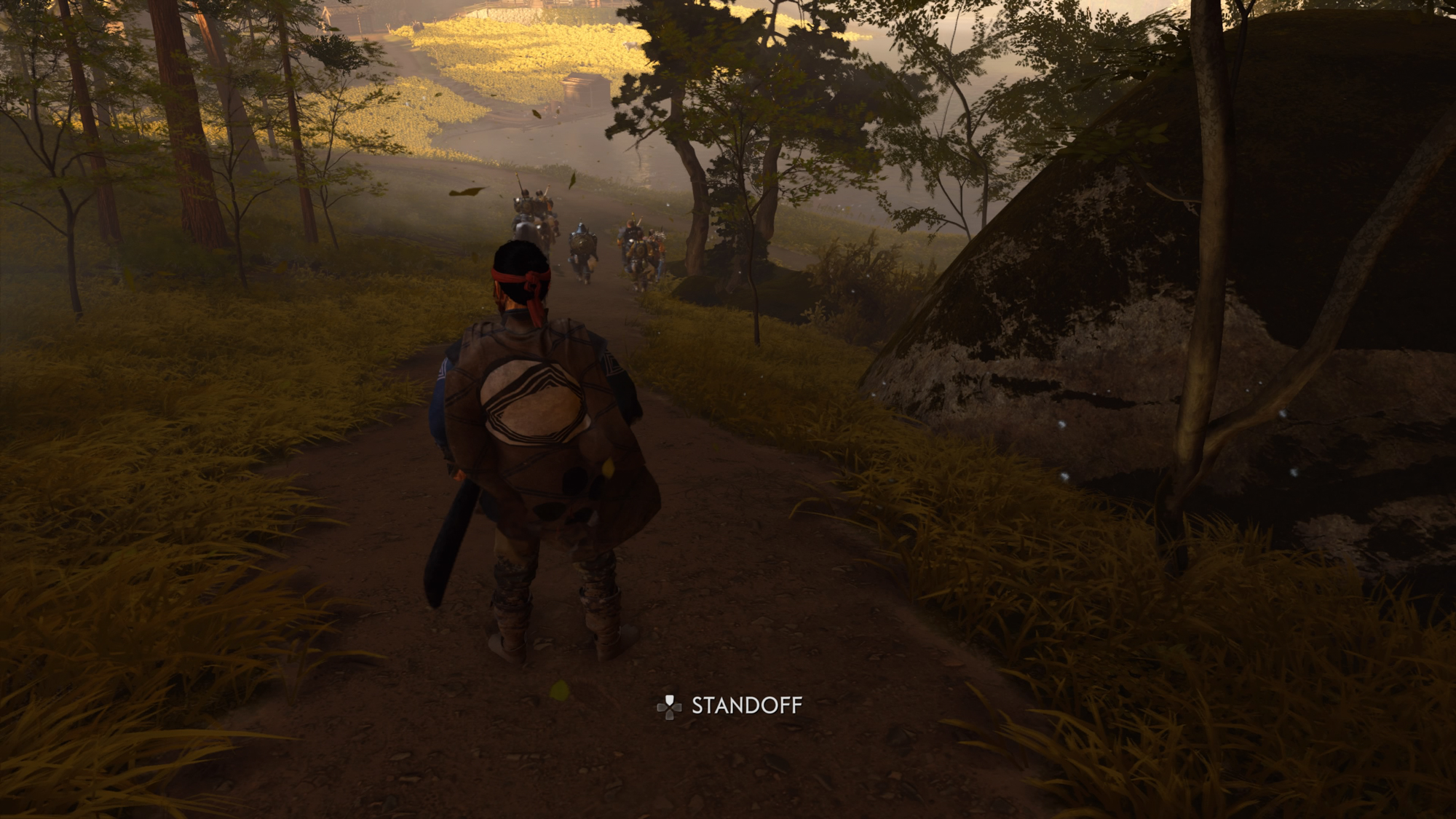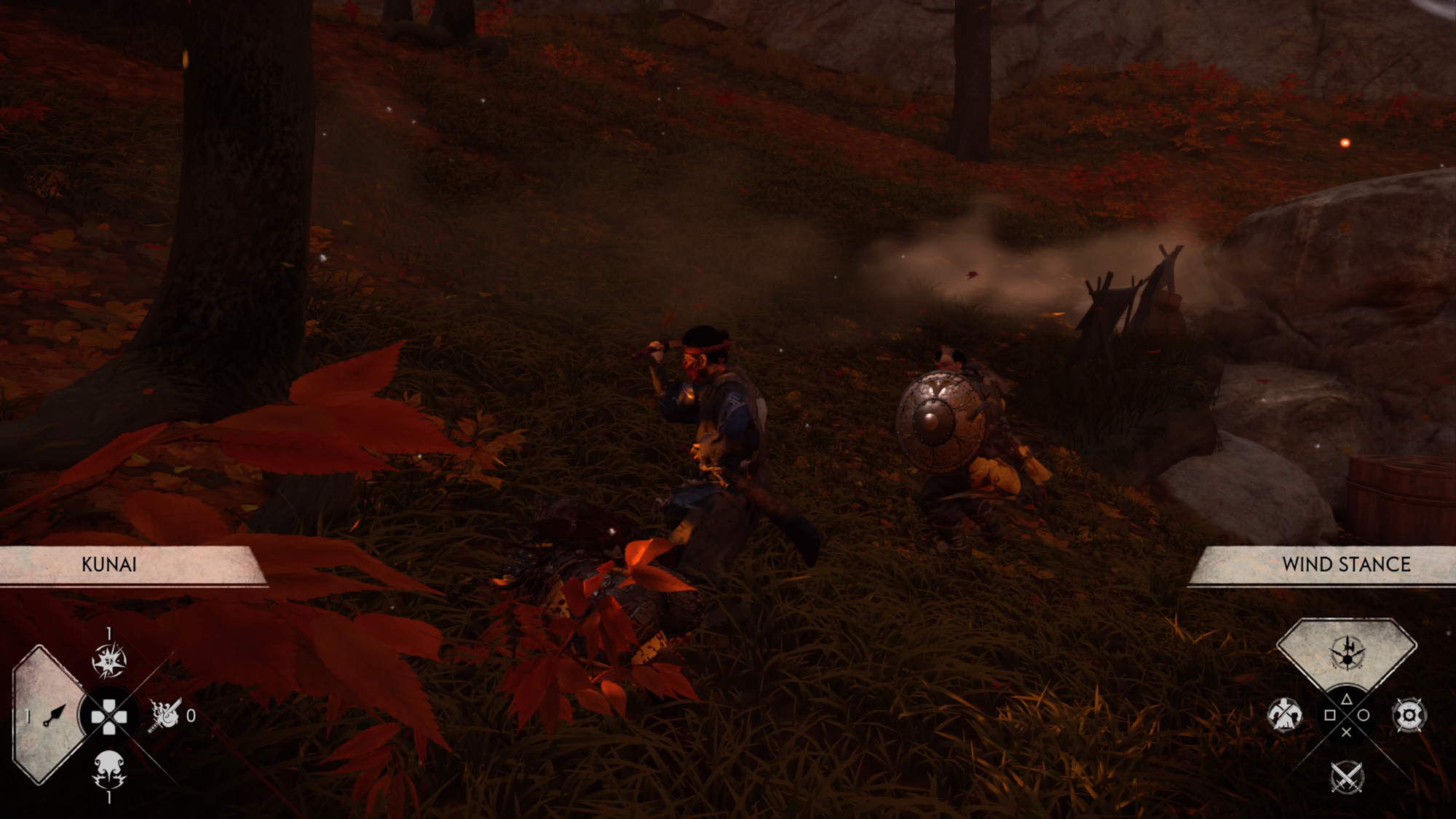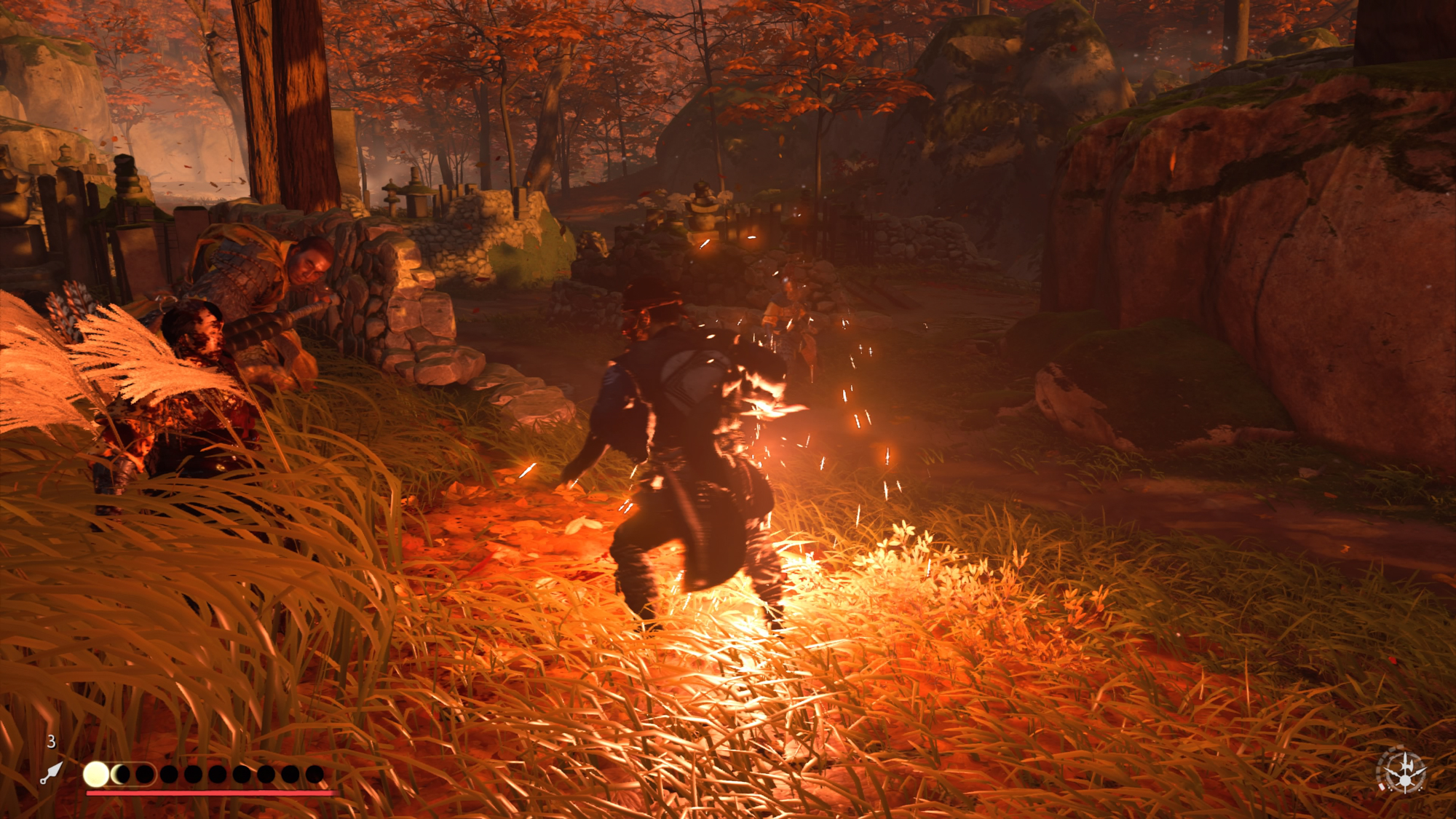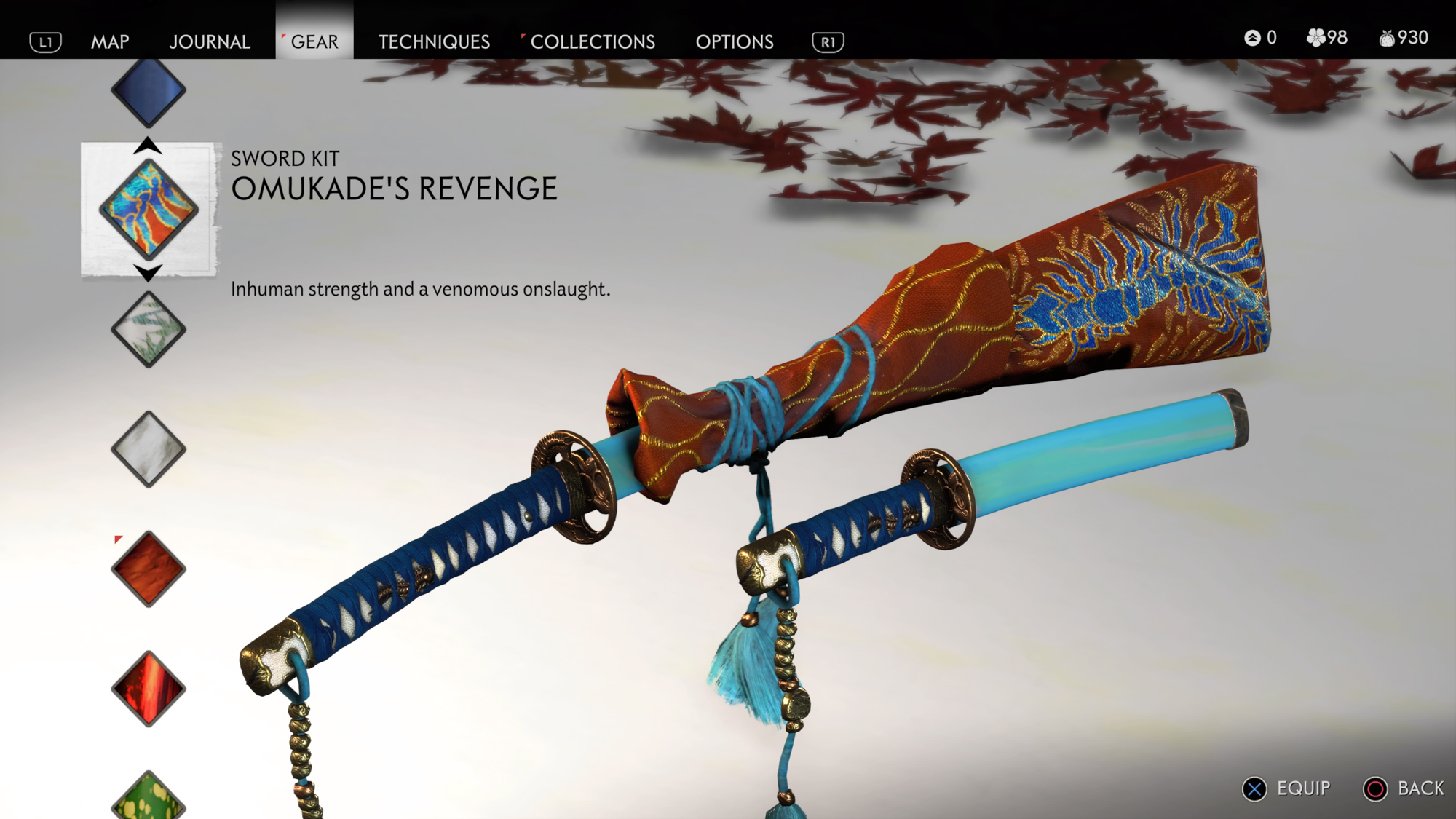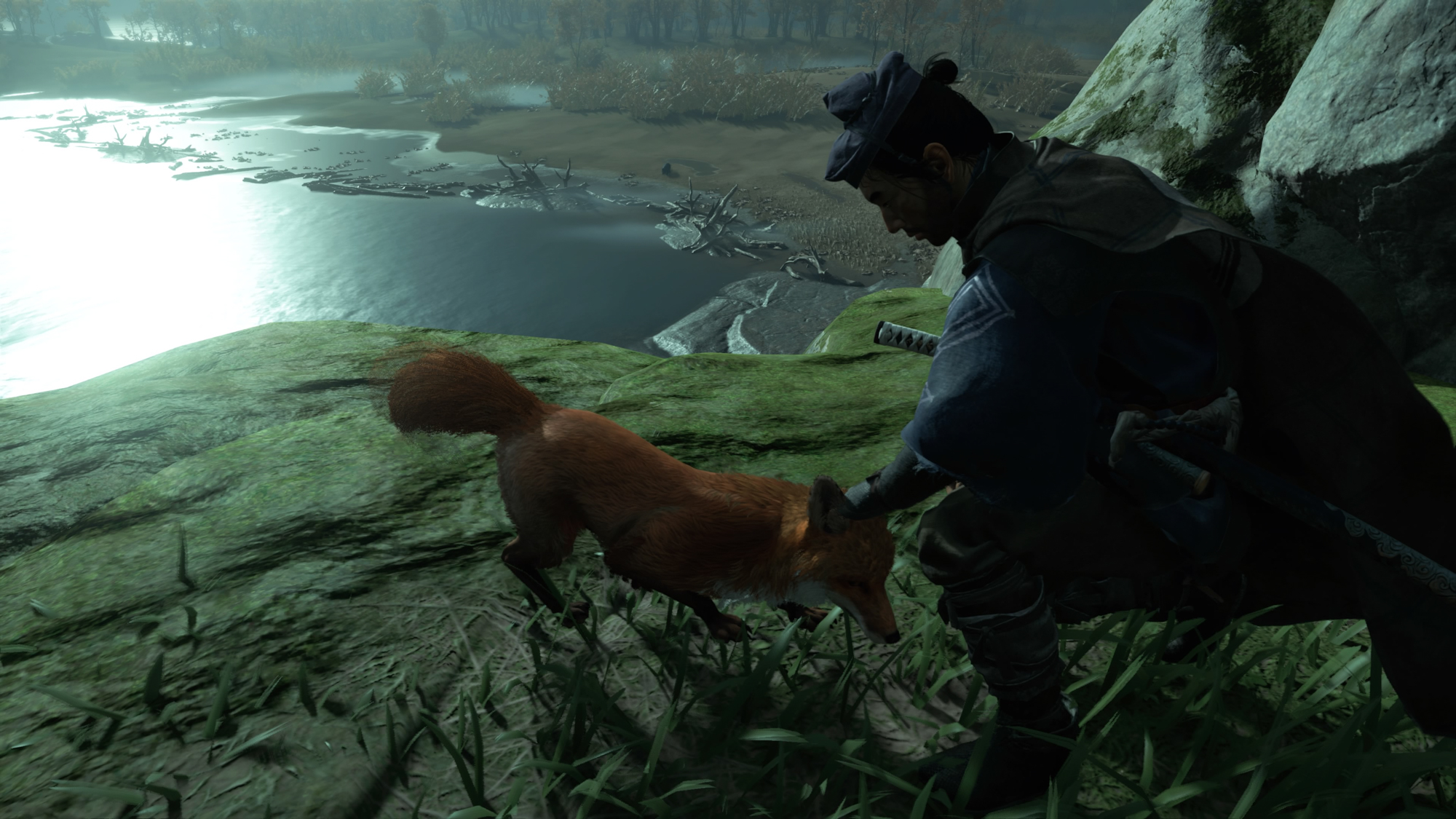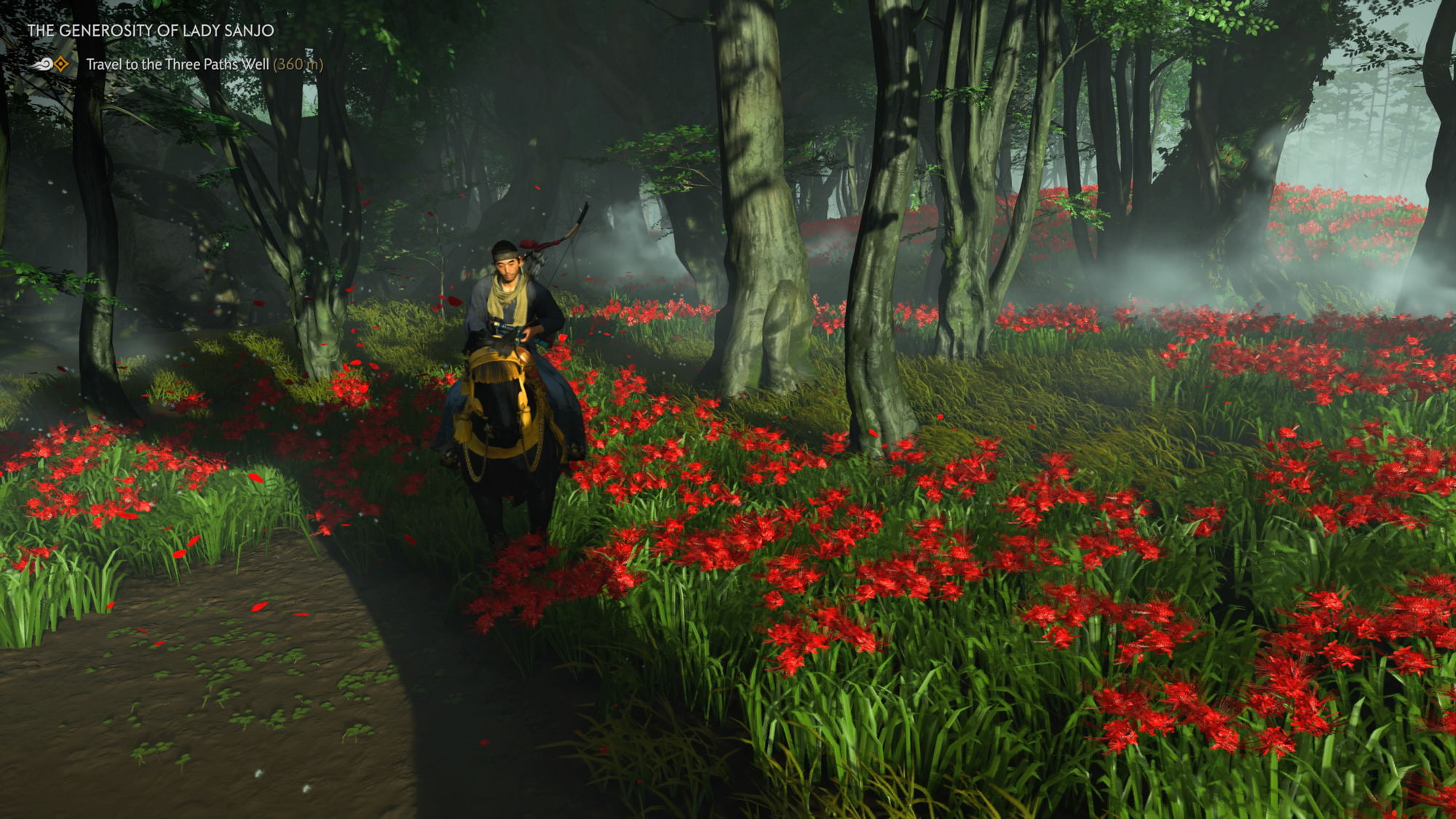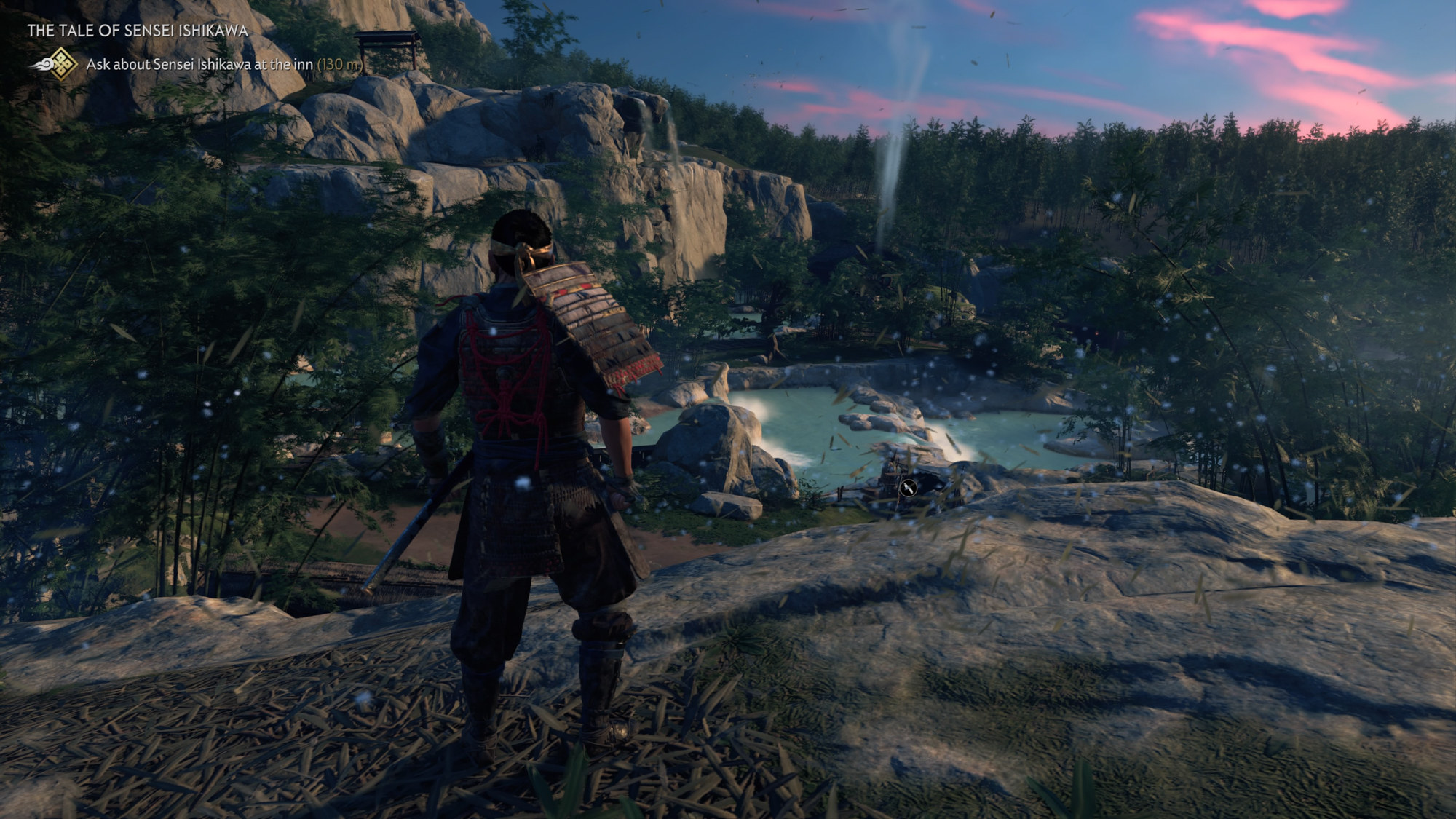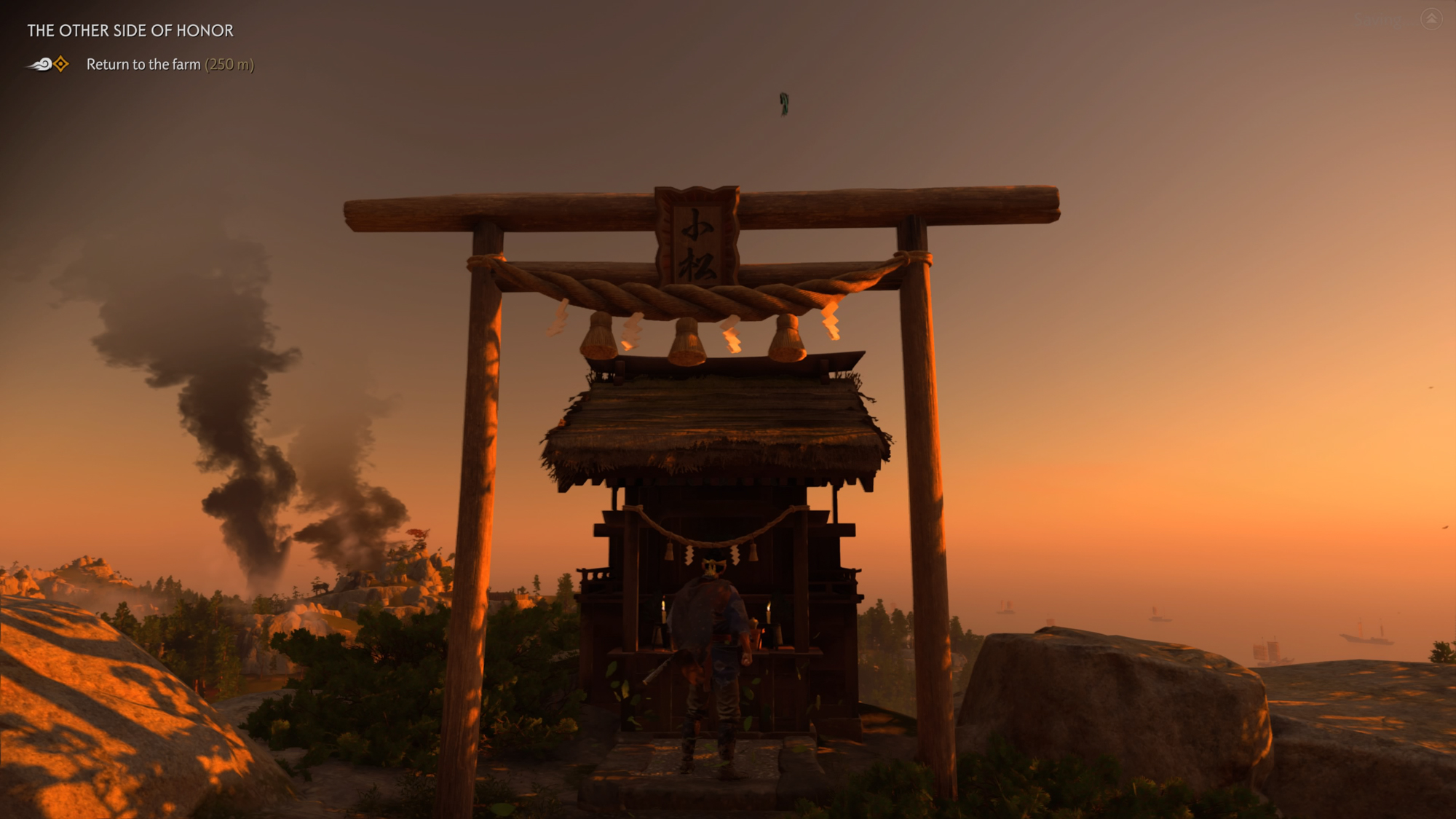Laptop Mag Verdict
Ghost of Tsushima delivers fun sword fighting and a great story in a gorgeous open world, but it falls prey to some common complaints.
Pros
- +
Great sword fighting mechanic
- +
Strong story with memorable characters
- +
Beautiful open world
- +
Lots of character customization
Cons
- -
Some collectibles are unnecessary filler
- -
Lacks morality meter
Why you can trust Laptop Mag
What would you do to save your homeland? How much of your values would you sacrifice, if any, and do the ends ultimately justify the means? These are the questions that weighed heavily on my mind as I made my way through Ghost of Tsushima. The latest IP from developer Sucker Punch and publisher Sony Interactive Entertainment is a third-person open world, action-adventure stealth title that’s both beautiful and brutal. Offering tense samurai duels, deep stealth mechanics and a compelling story set in 13th century Japan, Ghost adds some new spins to open-world games but it still falls into some of the genre’s traps.
The story of a samurai
Ghost of Tsushima takes place during the Kamakura period in feudal Japan. It’s a time frame marked by the prominence of the samurai, a class of warriors who lived by a strict code of honor. You play as Jin Sakai, the last surviving member of Clan Sakai, who from a young age has trained in the way of the samurai at the foot of his uncle, Lord Shimura, the jito of the island of Tsushima. All’s well until Khotan Khan arrives on Tsushima’s placid shores declaring war in the name of the Mongol army.
As Tsushima is the jump-off point for the Mongol invasion of Japan, Lord Shimura, accompanied by Jin and the Tsushima samurai, goes to face Khotun and his army in an attempt to stop the invasion before it starts. However, Khotun is nothing if not cunning and calculating. Studying the rigid way of the samurai class, his army easily defeats Shimura, destroying most of the island’s samurai and capturing the lord.
Jin is critically wounded and nursed back to health by Yuna, a common thief who requests his aid in rescuing her brother from Mongol clutches. Jin agrees if she in turn helps him free Lord Shimura. While infiltrating the castle, Jin comes face to face with Khotun Khan, who promptly kicks Jin’s ass and throws him off a bridge. Meeting back up with Yuna, Jin goes in search of help and a way to topple the Khan because it’s become painfully clear that the way of the samurai might not be enough.
Death and butterflies
The world of Ghost of Tsushima looks absolutely stunning, especially playing on a PlayStation 4 Pro with my 4K, HDR LG television. From the massive grove of ginkgo trees that make up the Golden Forest to mountains covered in gorgeous violet hyacinths, there is no end to the breathtaking beauty of feudal Japan.
However, amidst all the lovely vistas, there’s always evidence of the devastation caused by the Mongol invasion. You only have to walk a short distance in any direction to see the charred, mutilated, battered remains of your countrymen, left as a stark reminder of the situation. Still, I couldn’t help but admire the scenery. It felt like I was traversing a sea of molten fire as I traversed a grove of red maple trees.
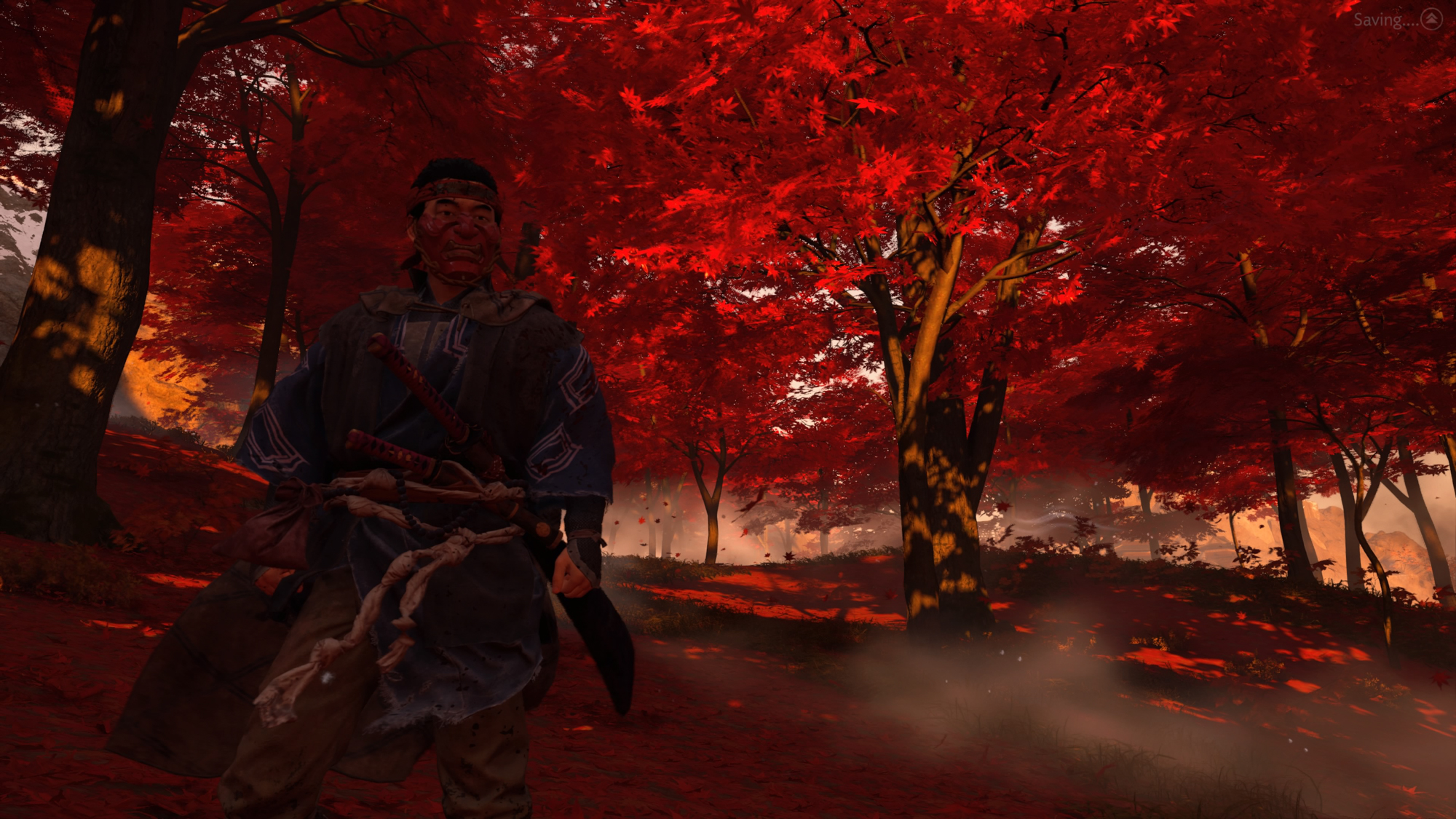
I was blown away by the sheer beauty of the deep red tones, especially during a moonlit night with the subtle fluorescence of fireflies lighting my way. The scene was capped off when I happened upon a sacred white deer. During the day, the fireflies were replaced by electric blue butterflies.
Sign up to receive The Snapshot, a free special dispatch from Laptop Mag, in your inbox.
I was also impressed by the games’ weather effects. Stay in any one area long enough and a swath of billowy clouds would roll in, replacing the once blue sky with grey clouds, heavy rain and violent lightning. It was most striking watching the weather roll in and out on one of the game’s many beaches.
When it comes to the music of Ghost of Tsushima, less is definitely more. There were many times during my playthrough where the only audio accompaniment was the sound of the wind leading me to my next destination, the crunch of my footsteps on the leaves, or the heavy thud of my steed. Then suddenly a flute would start playing, accompanied by string instruments –– maybe a biwa or shamisen. It’s tranquil and belies the war taking place around me. During a fight, the music is much more energetic, punctuated by taiko, an ancient drum and more aggressive strings.
Duels and poison
Like most open-world titles, how you approach obstacles in Ghost of Tsushima is up to you. Do you infiltrate enemy areas with your stealthiest moves or do you go in brandishing your katana, taking on all challengers head-on like a samurai? There are no wrong answers, but what sets Ghost apart from other games is the dueling mechanic.
It’s by far my favorite part of the game outside of the story. Duels are everything you’d expect –– dramatic and intense. In a duel, you get a closeup of Jin and his opponent as they prepare to fight to the death. From there, it’s a game of strategic strikes, blocks and parries as you battle to be the last person standing. Duels further along in the game are unsurprisingly more difficult as your opponent will frequently pull out unblockable attacks that you quickly have to dodge or counter with your own. I’m not going to lie, I had to replay multiple duels several times because I was getting my butt handed to me.
Whether you’re retaking a fort or just traveling the lonely roads of Tsushima, if you encounter any of Khotun Khan’s forces, you can initiate a Standoff encounter. A Standoff allows you to approach one of the Khan’s men in a face-off. When initiated, you have to hold down the triangle button and wait for your foe to strike. Do it right and they’re dispatched with a beautiful slow-motion strike, complete with a glorious splash of blood. You can take out up to four enemies this way, up to four enemies, with the number of victims dependent on your upgrades and equipment.
When you’re fighting a band of bandits (and not in a standoff), you can use Jin’s four fighting stances to help you deal with foes more effectively. You’ve got one stance for swords, another for spears, one for shields and another to deal with massive brutes. Mapped to the face buttons and the right trigger, switching between stances was tricky at first, but I was moving between them pretty seamlessly by the end of the game.
If you’re a stealth player, as I tend to be, the tall grass and your half bow are your closest friends. Sneaking around enemy bases was thrilling, especially once I got close enough to pull off an assassination or two. But again, as you progress further in the title, the tools in your stealth arsenal expand, allowing for much more creative kills. In one instance, I weaponed a simple wind chime, making it spew a poison cloud at whoever was foolish enough to investigate the noise. It definitely reminded me of Tenchu: Stealth Assassins. I only wish they had poison rice balls like the 1998 title, as it would have been a great way to deal with the Mongol’s dogs.
Jin has a health bar and a Resolve meter. Resolve is what allows you to perform more powerful techniques as you progress through the game. It’s also used to revive you in case Jin’s bested by a foe in battle. You start the game with three orbs of Resolve, but like your health bar, finding certain areas in Tsushima will increase your Resolve, so be on the lookout.
There are points in the game where you fight alongside an ally or two. While the help is definitely appreciated when fending off waves and waves of Mongol fighters, I do have a pet peeve. While I can revive my allies by pressing the R2 button, there’s no such support for myself. Even when I didn’t have enough Resolve to revive Jin, my allies would keep fighting, disregarding my distress until the inevitable death blow came and I had to restart the mission.
Tools of the trade
In his quest to free Tsushima from the clutches of Khotun Khan, Jin has a fairly robust collection of weapons and abilities to win the day. First off, you have your katana, a two-handed sword used for head-to-head combat. Then you have your wakizashi, or short blade, which is wielded for stealth kills. For ranged combat, you’ll get a half bow, which has access to a number of different arrow types throughout the game, including fire arrows.
And then there are your Ghost weapons. Unlike your katana and wakizashi, your Ghost weapons are decidedly unbefitting of a samurai and fall more in line with what you’d expect a ninja to wield. There are smoke bombs, kunai (throwing knives) and black powder bombs just to name a few. And yes, while using these weapons might not be the “Samurai way,” so to speak, I can’t argue against their effectiveness when fighting Mongols. There were many times when I was going to be overwhelmed by enemies and a well-placed kunai provided enough crowd control to turn the tides in my favor.
So many collectibles
The isle of Tsushima is broken up into three distinct districts, each crammed full of upgrades and collectibles. I definitely recommend taking some time off from the main missions to hunt for upgrades, such as Bamboo Sword Training stands and Hot Springs, as they can increase your Resolve and affect how much health you have. You should also be on the lookout for shrines and fox dens as both can award charms that augment passive abilities.
These are some of the useful collectibles, but there is, unfortunately, some unuseful gear floating around the game. While I love the haiku areas, which literally let you craft your own haikus while reveling in the jaw-dropping beauty of the game, the reward of a headband just doesn’t cut it. I could see it if the headbands granted some cool ability (and with a name like the Headband of Chaos, how does it not?), but nope, they’re all for cosmetics. The same goes for the sword kits found at the Pillars of Hope. However, I did switch my swords’ appearance often just to see how cool they looked during duels (Spoiler: They looked really cool).
Although it’s fun to jump on your horse and ride around to see what you can find, the easiest way to find all those points of interest is to clear out enemy forts. Once you totally liberate an area, the entirety of the district map will be revealed. However, I do concede that the headbands, flags and other collectibles are ways to pad this open world. It’s a design feature that I hope developers will retire sooner than later as it introduces tedium into an otherwise fun experience.
The legend of the Ghost
As Jin continues his quest to defeat the Khan, he’ll find himself departing further and further from the path of the Samurai. Instead, he’ll become the Ghost, a vengeful fighter who does whatever it takes to drive the enemy from Tsushima’s shores. During the journey, Jin’s legend will grow and build, netting him a new title and some Technique Points that let you upgrade one of the many skills and abilities available to Jin. I mastered everything before Act III in the game. And since there’s a stiff difficulty curve with each act, you’ll want to at least master your favorite skills before then.
Jin’s road to becoming the Ghost and freeing Tsushima is paved with good intentions and questionable tactics. On one hand, when I was playing, I likened his struggle to the American Revolution or any war where the combatants resorted to guerrilla warfare to overcome a more powerful, more organized force. Jin was doing what he had to rid Japan of the Khan, you see? This is war, and anything goes.
But that also got me thinking about the Geneva Convention, a set of rules to follow during wartime that dictates the proper treatment of the wounded, civilians and enemy combatants. And there are moments in the game when I did something I’m normally fine with in games but that Sucker Punch made much more repugnant. Maybe it was seeing my brutal actions in unflinching cutscenes, I don’t know, but I was definitely questioning the moves.
My colleague, Marshall Honorof, over at Tom’s Guide, didn’t use all the tactics in Jin’s arsenal. Instead, he played as close to the samurai way as possible. But no matter how he played, he still got the same cutscenes that I got, even though he was following samurai code and fighting every warrior face to face. I, on the other hand, had no qualms about stealth assassinations or chucking a sticky bomb on someone’s chest. He should have been rewarded for his choice of play or at least gotten another story arc. It really hobbles the notion of open-world gaming, which is sad, because having a few arcs would have suited this game in particular.
No happy endings
If you’re looking for your traditional happy ending, Ghost isn’t the game for you. For every mission I embarked upon, whether a side or a main mission, more often than not, I was traveling to give someone some bad news by mission’s end. This is war after all, but man, there were quite a few times where I had to tell someone that their loved one wasn’t coming back and that they had to make peace with it. And yeah, I know it’s only a game, but I watched the hope drain out of the eye of quite a few Tsushima citizens. It’s rough.
And trust me, neither Jin nor your main allies are immune from the impending doom. Your ally missions are deep dives into the horrors of wars and witnessing the changes they undergo throughout the missions is nerve-wracking. But without a doubt, Jin has the deepest transformation throughout the story. It’s been three days now, and I’m still wondering if I made the right choice. And maybe that’s the best part about Ghost of Tsushima. The story it tells isn’t a black-and-white morality tale; there’s so much gray to wade through. It’s a title that will stay with me for a while.
Bottom line
Overall, Ghost of Tsushima is what you get if you throw Assassin’s Creed and Tenchu: Stealth Assassins in a blender. It’s got a deep, compelling story and an absolutely gorgeous world to explore with top-notch sword-fighting skills. I discovered just about every peak and valley in the game and I’m thinking about doing it again. However, I do wish Sucker Punch hadn’t put so many otherwise useless collectibles in the game. Instead of adding filler, either give those items purpose or cut them altogether in favor of creating a story capable of breaking into multiple threads.
But overall, if you’re looking for a samurai title that pits you against a very human enemy with no right answer, then I highly suggest you give Ghost of Tsushima some of your time.

Sherri L. Smith has been cranking out product reviews for Laptopmag.com since 2011. In that time, she's reviewed more than her share of laptops, tablets, smartphones and everything in between. The resident gamer and audio junkie, Sherri was previously a managing editor for Black Web 2.0 and contributed to BET.Com and Popgadget.
